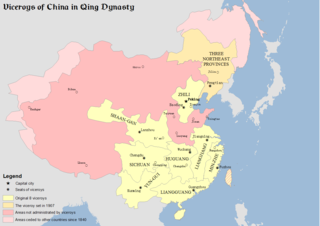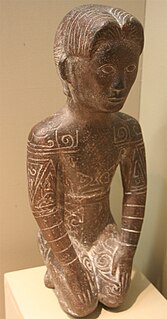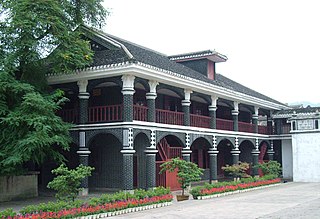 W
WThe 1957–1958 Asian flu pandemic, was a global pandemic of influenza A virus subtype H2N2 that originated in Guizhou, China. A 2016 study estimated the number of deaths caused by the 1957-1958 pandemic at 1.1 million worldwide.
 W
WThe 2017 China floods began in early June 2017. More than 14.9017 million people in 10 provinces and municipalities and regions were affected, especially the southern and central provinces and regions of Guangxi, Guangdong, Hunan, Hubei, Jiangxi, Jiangsu, Anhui, Zhejiang, Shandong, Shaanxi, Yunnan, Sichuan, Gansu and Henan. Hunan was the hardest hit. A total of 18,100 houses were destroyed, and more than 9,821-square-metre (105,710 sq ft) of crops were inundated.
 W
WSince early June 2020, heavy rains caused by the regional rainy season led to floods severely affecting large areas of southern China including the Yangtze basin and its tributaries. Rains and floods extended to central and eastern China during July and were described as the worst since at least 1998.
 W
WOn 7 July 2020, a local bus in Anshun, Guizhou, in southwest China, made a sharp turn and crashed into the Hongshan Reservoir in Xixiu District. At least 21 people died and 16 others were injured. Among the passengers on the bus were candidates for the Gaokao examination.
 W
WChiefdom of Sizhou, ruled by the Tian clan, was an autonomous Tusi chiefdom established by Tian Zongxian (田宗顯) during the Sui dynasty. After he conquered the Qianzhong area, Tian Zongxian was recognized as the hereditary ruler of the region by the Sui court in 582.
 W
WThe Guizhou clique, also known as the Qian clique, was a minor warlord faction in the Warlord Era of the Republic of China, situated in the province of Guizhou. Due to its weak economic situation, Guizhou warlords were typically dependent on more economically successful warlords such as the Yunnan clique and the Hunan warlords.
 W
WHuguang was a province of China during the Yuan and Ming dynasties. It was founded by the Yuan dynasty in 1274. During the Yuan dynasty it included the areas of modern Hubei south of the Yangtze river, Hunan, Guizhou, and Guangxi. During the Ming dynasty it came to include just the modern provinces of Hubei and Hunan, in the process adding areas north of the Yangtze. It was partitioned in 1644 by the newly established Qing dynasty, becoming the provinces of Hubei and Hunan, which were administered by the viceroy of Lianghu.
 W
WCharles Henry Judd, was a British Protestant missionary to China with the China Inland Mission. He was among the first to bring news of the Gospel to Guizhou, Hunan, and Hebei during the late Qing Dynasty when travel was limited to walking or river boat journeys.
 W
WThe Miao Rebellion of 1795–1806 was an anti-Qing uprising in Hunan and Guizhou provinces, during the reign of the Jiaqing Emperor. It was catalyzed by tensions between local populations and Han Chinese immigrants. Bloodily suppressed, it served as the antecedent to the much larger uprising of Miao Rebellion (1854–73).
 W
WMu'ege was a Nasu Yi kingdom in modern Guizhou that existed from 300 to 1698. Since 1279, Mu'ege was conquered by the Yuan dynasty and became Chiefdom of Shuixi under the Chinese tusi system.
 W
WTusi, often translated as "headmen" or "chieftains", were hereditary tribal leaders recognized as imperial officials by the Yuan, Ming, and Qing dynasties of China, and the Lê and Nguyễn dynasties of Vietnam. They ruled certain ethnic minorities in southwest China and the Indochinese peninsula nominally on behalf of the central government. This arrangement is known as the Tusi System or the Native Chieftain System. It should not to be confused with the Chinese tributary system or the Jimi system.
 W
WThe Viceroy of Yun-Gui, fully referred to in Chinese as the Governor-General of Yunnan and Guizhou Provinces and the Surrounding Areas Overseeing Military Affairs and Food Production, Director of Civil Affairs, was one of eight regional viceroys in China proper during the Qing dynasty. The Viceroy controlled Yunnan and Guizhou (Kweichow) provinces.
 W
WYelang, also Zangke, was an ancient political entity first described in the 3rd century BC in what is now western Guizhou province, China. It was active for over 200 years. The state is known to modern Chinese from the idiom, "Yelang thinks too highly of itself".
 W
WThe Yuanyang colliery outburst occurred at the privately run Yuanyang colliery in Puding County, Anshun, Guizhou, People's Republic of China, at 9:40 p.m. on 13 May 2010. At least 21 people were killed and at least five were wounded.
 W
WThe Baiyue, Hundred Yue, or simply Yue, were various ethnic groups who inhabited the regions of Southern China to Northern Vietnam in the 1st millennium BC and 1st millennium AD. They were known for their short hair, body tattoos, fine swords, and naval prowess.
 W
WZiqi was a kingdom established by the Wuman in southwestern China during the Song dynasty. The territory of Ziqi included parts of modern-day Guizhou, Guangxi and Yunnan provinces of China.
 W
WThe Zunyi Conference was a meeting of the Communist Party of China (CPC) in January 1935 during the Long March. This meeting involved a power struggle between the leadership of Bo Gu and Otto Braun and the opposition led by Mao Zedong. The result was that Mao left the meeting in position to take over military command and become the leader of the Communist Party. The conference was completely unacknowledged until the 1950s and still no detailed descriptions were available until the fiftieth anniversary in 1985.